This post may contain affiliate links. If you make a purchase through a link, I may receive a small commission, at no cost to you. These commissions help keep this website up and running, and I thank you for your support. Read my full disclosure here.
Disclaimers: I have in no way been influenced or paid to endorse these products. All recommendations are my own.
I’ve spent most of my life living ‘down under’ in the southern hemisphere, so over 30 hours of uncomfortable economy travel has been the norm on my regular overseas trips. I’ve also had loads of terrible hotel experiences; I’ve slept on a ‘bed’ that consisted of a grass mat on planks of wood with a pillow made out of wheat (both incredibly hard); springs poking up through the mattress; travelling on an overnight ‘sleeper bus’ where the seats were replaced with tiny beds not long enough to actually layout out on; train cabins full of strangers with beds stacked three bunks high, barely leaving any gap between them, forcing me to slither like a snake to get into bed, where I continually whacked my head on the bunk above me; rooms with no windows; rooms with no air conditioner in over 36ºC heat… you name it, I’ve experienced it.
So over the years I’ve developed lots of tricks and strategies that make sleeping on my holidays a lot more comfortable and achievable, no matter the circumstances.
How to Sleep Whilst Travelling On a Plane/Bus/Train
The key to falling asleep on any kind of transport is comfort. So being stuck on a plane, train, or bus seat for any length of time can make sleeping almost impossible. I begin fantasising about being able to lie down and stretch out. What makes it worse is that most budget airlines these days have removed the ability to recline the seat. Obviously if you have the money, then you can avoid this problem by flying business class and booking private sleeper train cabins, but most of us just can’t afford that luxury. So what can you do to make your journey more comfortable so you can at least get some sleep?
Neck Pillow
I never used to travel with a neck pillow because I hated the bulkiness of them and always thought that the inflatable ones looked uncomfortable. However, my Mother in law insisted that I borrow hers on one of my trips abroad. It was then I realised just how much comfort the right kind of neck pillow can provide, and I even managed to get some sleep on my flight. I was won over by how comfortable it was and ended up purchasing myself this inflatable neck pillow with soft outer cover. Being inflatable, you can inflate it as much or as little as you want, and the big valve on it makes this super easy (I can inflate it using only a few breaths). I particularly love the fluffy, soft cover, which not only makes it much more comfortable, but also more hygienic because I can easily remove it and throw it in the wash. Although it comes with its own carry case, I actually use the little side pocket to fold it up into itself.
Most of us just use the pillow around the back of the neck, however, if you have a problem with your head dropping forward which then awakens you (over and over again) then move the neck pillow around to the front of your neck to allow your chin to rest on it.
Most airlines do provide a pillow and blanket if you have to ask for it. However, for those that don’t or when you’re travelling on a bus or train, you can either bring yourself along a small travel pillow and place it where you need it. Or, if you are trying to travel light, then just fold up a soft jumper. Usually placing padding in the small of your back, between or under your knees or shoulders make you more comfortable.
If you do get a chance to choose your seat, then try to get a window one, preferably on the side that you like to sleep, as that may feel more natural and comfortable for you.
Clothing
There is nothing worse that having a tight waist band that digs into belly when you are sitting down. It can actually cause a tummy ache too. Also, when travelling on a plane, our tummies tend to get a bit windy so can expand. This is where comfy pants come into it. I love travelling in stretchy yoga pants, or just try to wearing some pants that have a bit of elastane in them. At the very least, try to undo your top button and just wear a longer top to cover up the fact!
Most people don’t think about their underwear when getting dressed for their trip, but a pair of undies with uncomfortable elastic or a too tight a bra will really ruin your ability to get comfortable and any chance of sleeping. So make sure you wear your comfy undies! And try wearing a wireless bra.
Also consider the socks you’re wearing on your journey. From the lack of movement, my feet end up getting really cold, so I need to make sure I wear some good quality wool socks that will also breath.
When flying, those at risk of Deep Vein Thrombosis (DVT), are usually encouraged to wear compression socks to reduce the risk of DVT.
I don’t actually usually have a problem with my ankles swelling, but after long haul flight I have found that the cotton socks I’ve worn caused a deep indentation in my leg where the band was and I had swelling below it which is pretty scary (this is even after I’ve moved around and done stretches during the flight). So now I’m really careful about what socks I wear.
Keep Warm
I tend to get very cold when I travel which makes it difficult for me to get comfortable and have any hope of sleeping. Sometimes the air conditioning can be blasting out and even if you close those little vents above you it can still be cold. Or on trains and buses I hate when people open the windows and cause a massive draught. That’s why I always travel with a pashmina. I use them as a scarf, as a shoulder wrap to keep me warm when it’s cool or when I’m sitting up in bed, and as a blanket, especially when I’m travelling on the plane, bus or train or waiting in the departure lounge, they are really versatile. Consequently, I have several pashmina’s in a range of colours. When choosing your pashmina, I recommend getting this wool and cashmere pashmina as it is much warmer and softer. Although they are more expensive, they make up for it by being breathable and wool is good at not getting smelly (great when travelling). However, if you are vegan then here is a soft feel synthetic pashmina.
Make it Dark
Light has a profound effect on sleep. Light exposure stimulates our alertness, making it harder for us to fall asleep. Furthermore, darkness throughout our sleep can lead to us frequently waking. So always travel with a sleep mask. Although, I personally prefer to cover my head with my pashmina. Yes, it looks a tad weird, but I prefer it over a sleep mask. I place it over my head so the long edge (not the tassels end) hangs down in front of my face to just under my lower lip so its not too stuffy to breathe. It feels like I’m in my own little private room/space, and it doesn’t matter how weird my sleeping facial expressions become or how much I drool, because no one can see me. When I first did this, my husband pretended not to know me, but 15 hours into our flight, he finally succumbed to my strange ways and ended up with the other end of the pashmina over his head. Needless to say, he’s now a convert. See my recommendations for pashmina’s above.

 Reduce the Unwanted Noise
Reduce the Unwanted Noise
Chatty passengers and noisy engines can really affect your ability to sleep, so always travel with a good set of ear plugs. If you find it difficult to get the ear plugs to stay in your ears, you may prefer using the silicone ear plugs.
I personally prefer noise cancelling headphones. I never realised just how loud the plane engines and passengers were and its effect on me until my husband lent me his noise cancelling headphones. Firstly, they make it so much easier to hear the movies. With the usual crappy headset you’re given on the plane, I usually have to crank the sound all the way up to be able to hear what the actors are saying over the drone of the engines (and I have perfect hearing!). But with the noise cancelling headphones I can listen to the movie at a normal volume. It also significantly improves the movie experience because I can hear the conversations and the sound effects much more clearly.
But of course, we’re talking about sleeping, so when you’re not watching movies, these are perfect to wear throughout your flight with the noise cancelling function turned on to cancel out the surrounding sounds. When I take them off to go to the bathroom, I am always surprised at just how loud it is inside the plane and how much noise the headphones are blocking. I find that it helps me to feel much more relaxed on the plane and I’m even able to get some sleep (and I can’t usually sleep on planes), and even if I don’t sleep, I still don’t feel as tired when I step off the plane. Constant exposure to loud noises is actually really tiring.
Bose noise cancelling headphones are considered the best and their user reviews support this, however, they are very expensive. If you’re looking for something more affordable, then try the Sony noise cancelling headphones. They also get excellent reviews but are much cheaper. Both models are wireless Bluetooth headphones and feature active noise cancelling. They also come with the necessary airplane connections and a handy travel case.
Stretching
Make sure you regularly get up and take a walk and stretch (difficult I know as there is not usually much room to move around on transport). Otherwise you will start experience pain a discomfort which will affect your ability to get some sleep. I’ve included a airplane stretches video below.
Sleeping at Your Accommodation
Sound and Light
It’s frustrating when your accommodation has poor curtains and a giant street light outside of it. Or maybe you’re holidaying in Iceland during the summer, and it doesn’t really get dark at all. Either use a sleep mask, or, if there is an annoying gap in the curtain, then get inventive and pin them together using hair pins or clips.
If you have noisy neighbours, beside a loud highway, or your room is above a busy bar (I’ve experienced all three), use some ear plugs. If you know that you are really sensitive to sound whilst sleeping, you might want to think about travelling with a white noise maker which promotes relaxation by providing a constant, soothing sound for your brain to settle on. You can get good travel sized ones these days like the Dohm-DS All-Natural Sound Machine.

 Pillow Too Small and Flat
Pillow Too Small and Flat
First, look in the cupboards to see if there are any additional pillows. If there’s none, then try placing a soft jumper or two into the pillow case and position them where they can provide you some extra comfort/height. Just don’t forget to take them out when you go to leave.
Uncomfortable Bed
A mattress that is too hard, too soft, too lumpy, has springs poking through the padding, or a poorly made sofa bed, I’m sure that we can all say that we’ve experienced this before. The worst for me is a bed that has sunk in the middle. It’s not so bad when you are sleeping alone, but sleeping with a partner leads to terrible roll together. It ends up really hurting my back.
For a hard mattress, you can try lying on top of the duvet (check the cupboards to see if there is a spare one). For a too soft mattress, back sleepers should support their spine by placing a pillow under the knees, or between the knees for side sleepers.
Heat
I like it hot, but I struggle to sleep in the heat. In fact, the suggested bedroom temperature for optimal sleep is 15ºC to 20ºC (60 to 67ºF). A hot room can lead to a restless night and can affect our quality of REM (rapid eye movement), our deepest and most restorative sleeping state. That’s why you can still wake up feeling like you’ve not slept.
So you’re on your summer holiday, it’s over 30ºC (86ºF) and you realise that you’ve booked accommodation with no air conditioner. So what can you do? Firstly, check if the hotel can at least provide you a fan. In addition, try hanging a damp towel over an open window, it can help to cool the room as the water evaporates.
Next, dampen a face cloth and fold it in half and place it on your forehead, neck, or wrists, whatever provides you the most relief and regularly turn it over as it gets warm to refresh it. If you have a fridge, or preferably a freezer, then that’s even better. Place the wet cloth in there to cool it before taking it to bed with you. If you have several face cloths (again, ask your accommodation if they can provide you some additional ones) then have one cooling whilst you use the other, and swap them over when they get warm.
In addition, get some drink bottles and fill them with water and put them in the fridge or preferably the freezer. Once cold, get them out and wrap them in a t-shirt (as they will get wet with condensation) and place them against your body in bed. It’s also nice to fill a spray bottle with water and spritz it over your bare skin (because let’s face it, you’re probably sleeping naked).
Finally, just sleep spread eagle! Let the air circulate around your body. If you are sharing a bed, and there’s a spare bed in your room, then it might be best to sleep separately (not very romantic I know, but more comfortable).
If you know you that are travelling to a hot country with limited cooling options, you could also travel with a small travel fan that has a handle that you can carry around which can then fold up to sit on your bedside table.
Dry Air
If you are travelling in a country with really dry air, it’s going to dry out your mouth and sinuses. So consider buying a travel sized humidifier. It also stops your skin from drying out. This lightweight Fancii Cool Mist Personal Mini Humidifier can run on USB or Battery and you can just use it with standard water bottles.
Additional Tips for Sleeping
- Reduce stimulants such as caffeine at least 4 to 6 hours before your sleep time.
- Avoid staring at laptop/phone/iPad screens, as the bright light from the screen will affect your melatonin production giving the body the impression you aren’t ready for sleep.
- Try using aromatherapy to help relax and send you off to sleep. I love to spritz this Deep Sleep Pillow Spray by This Works onto my pillow as I’m getting into bed. It contains a soothing blend of lavender, vetivert, and chamomile essential oil. I love it so much that I make my own, so try out my easy 3 ingredient Deep Sleep Pillow Spray recipe.
- Even if you don’t achieve some quality sleep, at least try to rest your eyes so that it takes the edge of your exhaustion and hopefully allows you to have some energy to start your sight seeing as soon as you arrive.

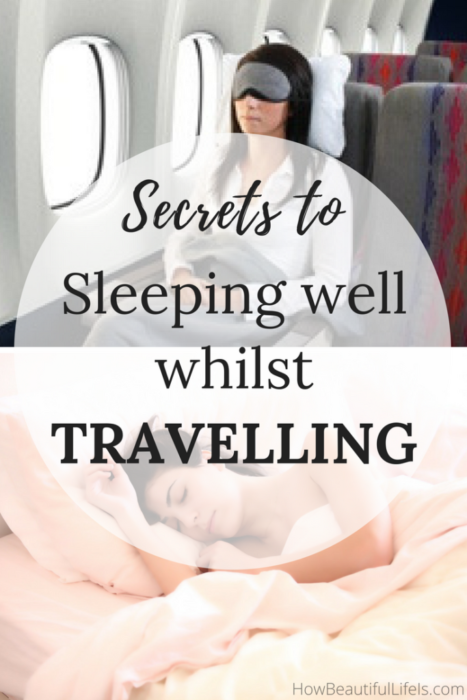






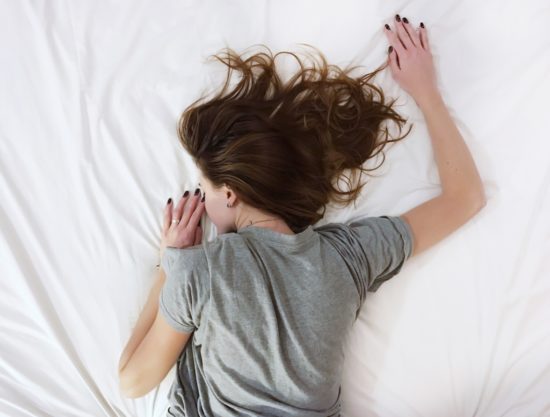


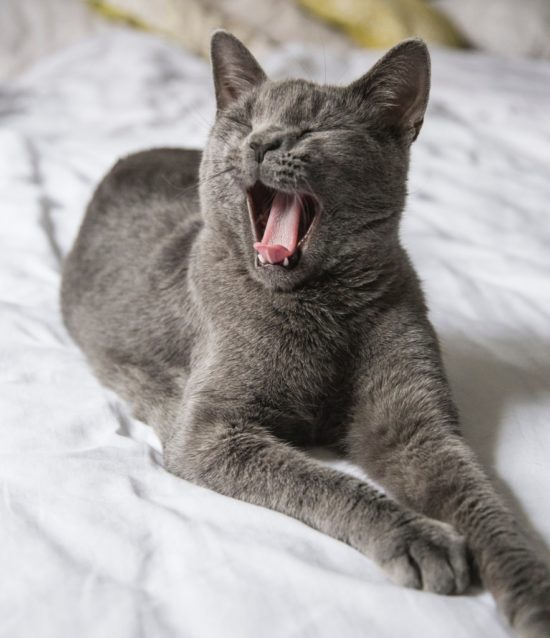

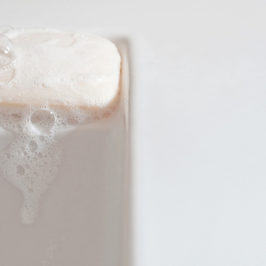

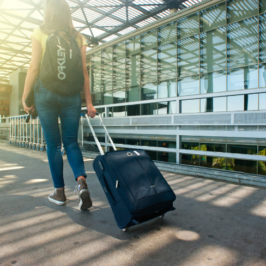


Leave a Reply